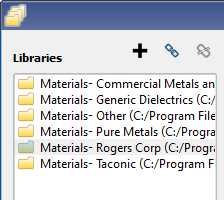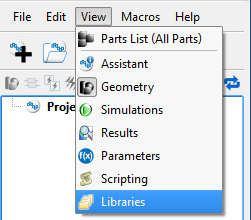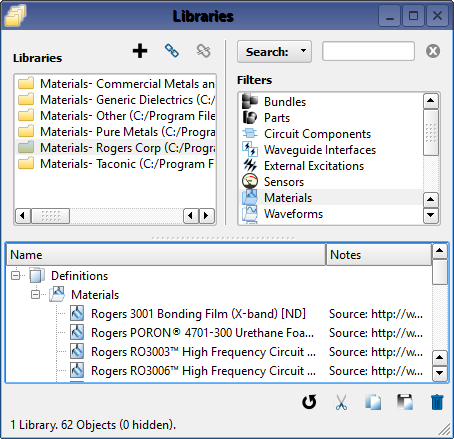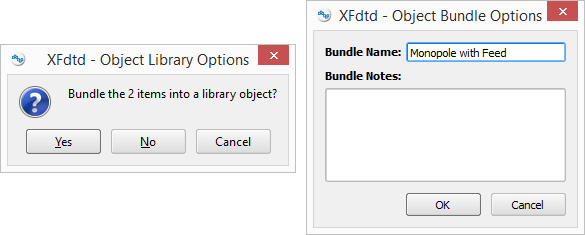Libraries are reusable collections of objects and definitions that facilitate efficient project creation. Each library links to a directory on a local or shared disk. Objects and definitions added to a library are saved to their own subdirectory rather than to a specific project, making them available for use in subsequent projects. This allows users to import library contents into a project and avoid rebuilding frequently-used objects and definitions each time they are needed.
Controls
Add a Library
Each library listed in the Libraries window points XF to a locally-saved directory. This window allows users to add libraries to XF by either creating a local directory or loading an existing library.
Users can create a new library by clicking the ![]() button in the upper-left portion of the window to open the Create a new Object Library directory window. Here, a library is created once the named file is saved to the specified location by clicking Save. The new file appears immediately in XF's listed Libraries and is available for added content.
button in the upper-left portion of the window to open the Create a new Object Library directory window. Here, a library is created once the named file is saved to the specified location by clicking Save. The new file appears immediately in XF's listed Libraries and is available for added content.
Users can access an existing library by clicking the ![]() button to open the Load Object Library window. Navigating to the directory's location, selecting the desired library, and clicking Select Folder adds the directory to XF's available libraries.
button to open the Load Object Library window. Navigating to the directory's location, selecting the desired library, and clicking Select Folder adds the directory to XF's available libraries.
Add and Use Library Contents
Users can add to a selected library by clicking on the desired object or definition in the project tree and dragging it to the lower portion of the Libraries window. The added content is visible in the window when its associated category is selected in the Filters pane.
Users can import library contents into a project by clicking on the desired object or definition in the lower portion of the Libraries window and dragging it to the appropriate branch of the project tree.



